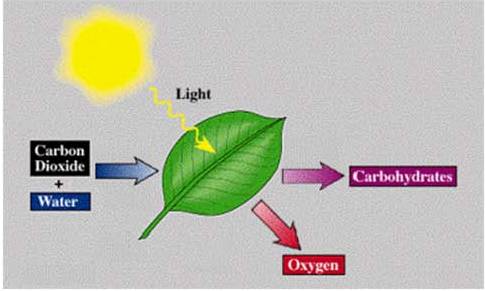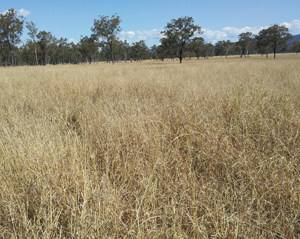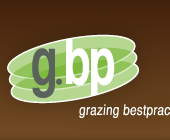INTRODUCTION
Pasture based grazing systems in Australia are being seriously affected by climate variability and limited management. The way forward is to adapt to meet the changing situation, work with nature, and create tools and best practice strategies to maximize production opportunities. The challenge producers face is four-fold in that they must be able to become increasingly efficient while
- Maximising production
- Maximizing carbon sequestration,
- Minimizing greenhouse gas emissions and
- Manage for variable climatic conditions.
Our soils have become unbalanced and depleted of nutrients and biology and the land condition is generally less than a decade ago. Understanding how grass grows and the impact stock have on pasture are the keys to pasture management.
Technology of Growing Grass video
Photosynthesis - the most important process on earth.
This sounds complex, but is worth a read!!!
Without photosynthesis, we would all die. This is the most important single chemical reaction in the world. Graziers and farmers are the managers of photosynthesis or production from the sun. A green leaf on a grass or legume or tree or other vegetation once exposed to sunlight absorbs light through a green pigment called chlorophyll. When a molecule of chlorophyll absorbs energy from the light, the molecule become excited and loses an electron, giving it a positive charge. The Chlorophyll molecule removes an electron from a molecule of water (absorbed through the plant roots), making the water molecule unstable so that it splits into two atoms of Hydrogen and one of Oxygen (Parsons 1995). The Hydrogen combines with Carbon absorbed through the leaf pores known as stomata to form sugar. The oxygen is released through the stomata to the atmosphere to provide life to all humans. (Chlorophyll is formed from nutrients from the soil and air).
The plant uses sunlight to convert carbon dioxide (absorbed through the leaves) and water (absorbed through the roots), into simple sugars (glucose) for energy (use by the plant to function) and oxygen is released as a by product back in to the atmosphere.

A simple diagram showing photosynthesis.
The energy from the sun is also converted to reserves of starch, fats and oils, which are exuded into the soil to feed the bacteria, fungi etc (microbes) and stored in the roots to enable life to continue during dormant phases and to provide initial growth once the leaf has been removed.
The photosynthesis equation:
6 CO2 + 6 H2O + sunlight energy = C6H12O6 + 6 O2
6 carbon dioxide + 6 water + sunlight energy = glucose (a simple sugar) and oxygen
Carbon sequestration
The next step after photosynthesis is amazing - Plants are able to sequester carbon compounds into the soil via their root system. This carbon (also known as energy) is exuded into the soil and can include such things as gums, resins and oils. Exudation is the process whereby the plant releases such substances through their roots, stems or leaves.
So what does it mean to my soils and plants and me? Basically, the exudates released via the roots into the soil can be energy or food for micro organisms and animals in the soil. There has been much documentation and literature on the effect and benefits of plant exudation in the soil, particularly in the rhizosphere (immediate area of the soil surrounding the plant roots).
Watch this video Carbon cycle - Mycorrhiza and Healthy Grass
Phases of Plant Growth - maximising exudation of carbon and plant growth
Good managers are able to get free feeds from their paddocks, basically doubling carrying capacity from the normal number of animals carried. And at the same time, improve the pasture and land condition by simply using some very basic knowledge. However, this means it must be managed grazing. All grasses and pasture plants are able to photosynthesise CO2 into carbon compounds, but only if they have adequate green leaf.
If for example, it is early in the season (Phase 1 below), when pasture is starting to grow and the leaf is very short, the plant will be drawing carbon from its roots to initiate growth. That means an amount of live root will die and drop off. If stock are eating the plant as it tries to grow, it will continue to use carbon from its roots each time it is bitten, until it dies.
Phase 1: Young plant starting to grow - “If you bite me too hard, I may not survive”

Energy is being drawn from the root reserves or seed if a seedling, as there is no
leaf area to photosynthesise plant food.
Phase 2: Vegetative stage - “Please graze me now or lose me”
Energy is being drawn from the leaf area as the plant is in its best possible photosynthetic position. (Maximum growth period). Pasture quality is good and energy and yield are good.
Carbon is being exuded into the soil and to feed microbes during this phase unless the plant is overgrazed.
It is important to manage the pasture during the growing season so that it remains in phase 2 throughout the growing season. To do this it is imperative that the majority of plants are not grazed until they are in the top of phase 2. If the plants are in phase one, they are highly susceptible to being permanently damaged.
Phase 3: Senescant stage - “I'm past my best, but still valuable”
 Energy is low and a small amount is being drawn from the leaves and the roots. Lignification is high, quality is low and yield is high. For a cow, energy is high (lots of grass), protein is low (no green material) Will probably require supplementing to get a weight gain.
Energy is low and a small amount is being drawn from the leaves and the roots. Lignification is high, quality is low and yield is high. For a cow, energy is high (lots of grass), protein is low (no green material) Will probably require supplementing to get a weight gain.
For more information and to arrange Grazing BMP support programs contact 0438 395 255



